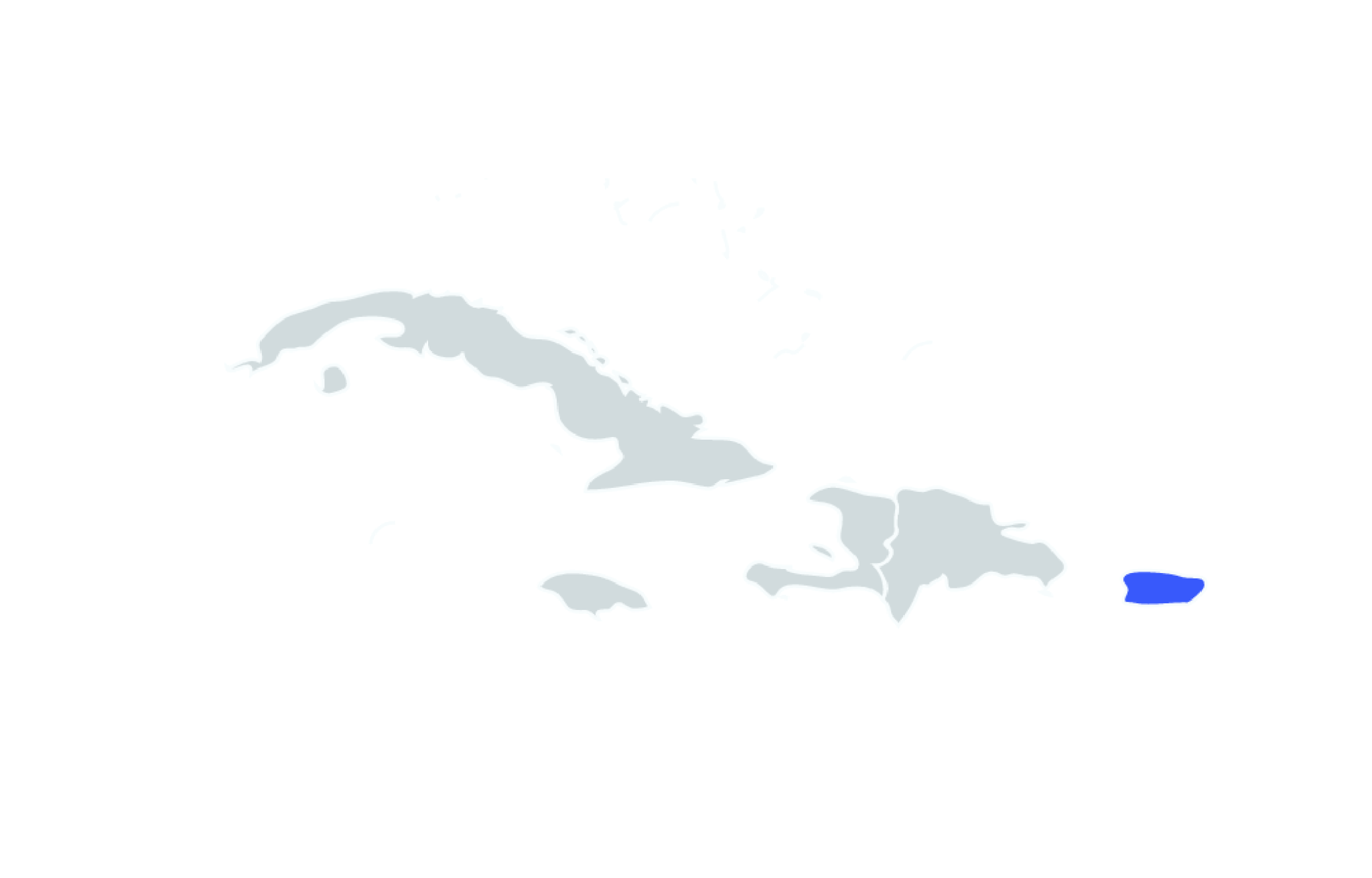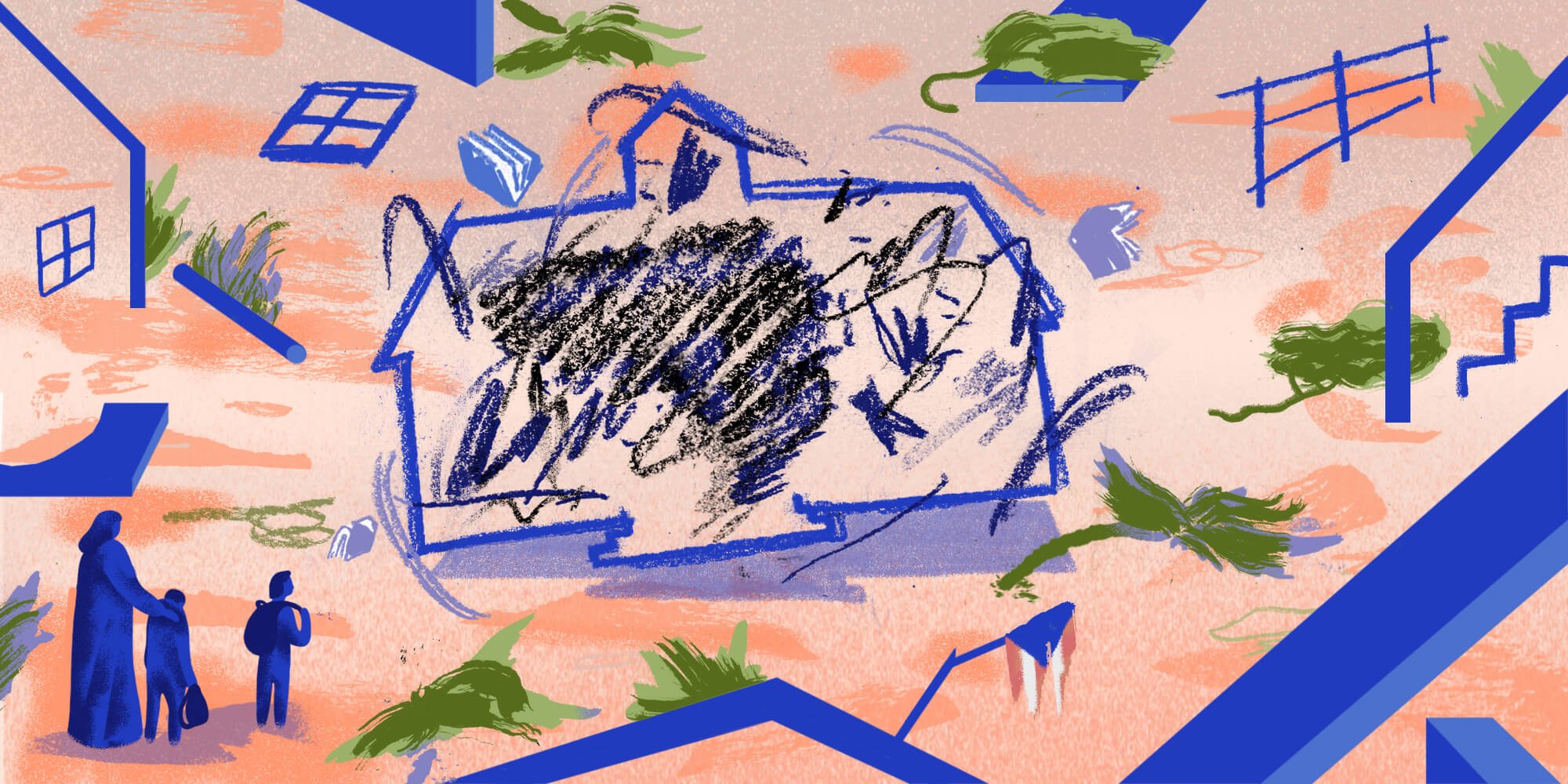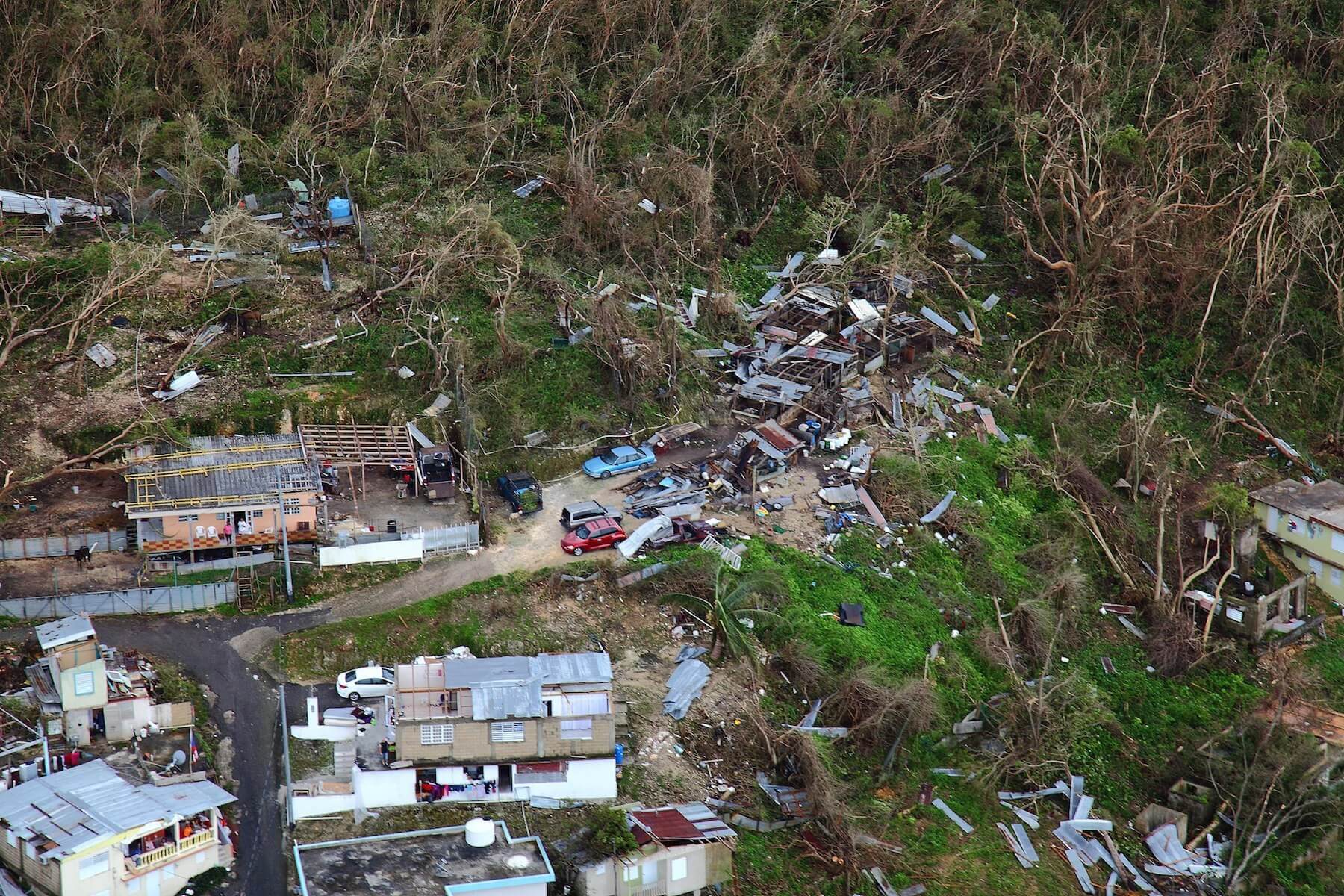
Global Issue
Illiteracy
Series
If You Can Read This
The mid-afternoon sun beat down on the streets of Hato Rey as teacher after teacher stormed the building.
Once inside the Department of Education, they pushed past the first floor and entered the stairwell. Twenty-one public school teachers brushed shoulders and marched together — clad in the matching yellow t-shirts of the Federacion de Maestros of Puerto Rico (FMPR), emblazoned with the words “En DEFENSA de la Educación Pública!”
Months had passed since the waters of Hurricane Maria finally subsided from the island, yet thousands of students still remained out of school. Teachers and communities joined hands to clear debris and bring facilities back to order in a matter of weeks, yet they were instructed by government officials not to open their doors. Instead, student-ready classrooms sat quiet and empty.
Furious with the education department’s refusal to reopen public schools, Puerto Rico’s teachers decided to take a stand. Many had already spent decades fighting the ongoing threat of privatizing the public education sector, leading grassroots efforts of resistance against corporations and special interest groups. But while the struggle wasn’t anything new, the possibility that the government could be using the devastation left by Maria to expedite their agenda raised alarms throughout local communities. There was a newfound feeling of urgency that something must be done.
The storm’s destruction exposed wounds that were far from healed; they had simply remained hidden.
The teachers made their way through the first floor of the Department of Education with little resistance. Waving signs of protest, the group advanced towards the second-floor office of Puerto Rico’s Secretary of Education, Julia Keleher.
They never made it to her door. Members of the agency press office and security employees came to a head with the protestors, and within minutes, local police descended on the scene. Nineteen of the teachers’ union members were escorted from the headquarters, handcuffed and shuffled outside into crowds of roaring protestors, into the roving cameras of media crews and onlookers.
Education Safety Commissioner César González falsely informed reporters that the protesters assaulted at least three security employees and a public relations employee while inside the building. The Education Secretary issued a press statement, addressing these alleged acts of violence.
“Today our children are witnesses of how some adults behave,” Keleher wrote. “The aggressions today, as well as the violent way in which they broke into the work area of their own comrades, is unacceptable and lacerates the very system they represent.
“Every action has consequences and it will be the public order authorities that will take care of this unfortunate situation,” she added.
But Eulalia “Laly” Centeno, an elementary school teacher who had marched with the other FMPR members into the reception area, insists that no violent acts were committed and that protestors only demanded to see Secretary Keleher to request the reopening of public schools on the island.
The acts of civil disobedience and the subsequent arrests that occurred in San Juan on Nov. 7, 2017 are merely fractures in the surface, belying a far deeper, foundational struggle at the heart of Puerto Rico’s education sector: the ongoing fight against government and corporate agendas to commandeer the public system for profit. Over the past three decades, the FMPR and local unions have banded together with communities to fight the privatization of public schools on the island.
In the Wake of Maria: A Search for Truth in Destruction
Days after being released from police custody, the voice of FMPR Vice President Edwin Morales crackles to life through a patch of spotty cell phone service.
“There is an industry of failing, of making the schools here fail for a profit,” he says.
Morales is a teacher from Carolina, a small town on the northeast coast of the island. He first caught wind of the FMPR teachers’ union while he was studying to become a teacher at the University of Puerto Rico.
“Since 1998, Puerto Rican government workers were not allowed to strike,” he says. “But in 2008, everything came to a head when they finally put a spotlight on the injustices being done to them.”
“A change is happening on the island. You can see it.”
The teachers, earning wages that maxed out at just $26,000 a year, had worked for nearly 30 months without a contract. In 2007, when Govenor Anibal Acevedo Vila imposed new working conditions, decertified the union, and suspended its dues checkoff, union members became enraged. His retaliatory actions arrived on the heels of a strike that was authorized by 7,000 FMPR delegates less than a month earlier.
After a series of political squirmishes, the FMPR has diminished from 40,000 members in 2008 to roughly 3,000 today. Many union members point to this weakening of the labor movement as the reason why there has not been a larger political movement to protest the actions of local and federal governments following Hurricane Maria.
The crisis of the hurricane not only thrust the island’s population into a struggle for their survival — it also revealed the extremity of poverty that many of Puerto Rico’s residents endure.
In this way, the storm’s destruction exposed wounds that were far from healed; they had simply remained hidden, out of sight. The same is true for the light that has suddenly been cast on Puerto Rico’s failed education system, one that has been reeling to stay afloat in the aftermath of Maria.

Sixteen-hundred miles away from San Juan, it’s cold and raining in midtown Manhattan. Taxis rush past the blurred lights of Madison Square Garden, and just a block away on 131 West 33rd Street, teachers and grassroots organizers are beginning to file into a nondescript building tucked away in the rows of high-rises and commercial skyscrapers. They have come to bear witness to an event titled “A Call to Action on Puerto Rico.”
Inside the small conference room on the second floor, almost every seat is filled. There are Puerto Rican public school teachers, FMPR leaders, community organizers, and those who have simply shown up to hear exactly what’s happening on the island.
Normahiram Pérez, a Puerto Rican public-school teacher and community member of Call to Action, makes her way to the podium and adjusts her glasses. It’s a slow, deliberate motion that is echoed by the care she takes when choosing her words, pausing for a moment to think through each one.
“A change is happening on the island,” she says, greeted by a silent nod of heads around the room. “You can see it.”
The hurricane was exacerbated by Puerto Rico’s dire economic crisis, she explains, which was in turn a colonial crisis.
“When we passed by on the highways, in the months before Maria, there were a lot of trees that covered the poor communities in Puerto Rico,” she says.
“When the hurricane finished passing through, you could suddenly see all of the misery, all of the destruction of how our people are living. That’s a reality check that many people saw.”
But the problems started long before the storm carved its warpath through the island. As many know, the commonwealth has been sliding into a deepening economic depression for more than a decade, and its schools have faced seemingly insurmountable hardships during that time. In 2016, fewer than half of all students scored proficient in Spanish, math, English, or science. Ninety-percent of these public-school students were low income. Furthermore, upwards of 700,000 students left the island between 2016 and 2017. In 2017 alone, nearly 200 schools closed their doors for good in an effort to repay debt and pension obligations of $123 billion.
In 2017 alone, nearly 200 schools closed their doors for good in an effort to repay debt and pension obligations.
Then the hurricane swept through the island on Sept. 16, shutting down all of the 1,113 schools and displacing more than 347,000 students. When the Federal Emergency Management Agency (FEMA) didn’t arrive, many local communities joined together with teachers to clear the debris from their classrooms. Still, with schools that were fully operational and with teachers taking matters into their own hands to resume classes as early as the following month, Keleher instructed them to send their children home until the facilities were properly inspected and deemed fit for use.
The inspections, however, proved to be anything but transparent. The Education Department never clearly outlined their criteria for determining when a school was ready to reopen its doors. According to the department, each school had to be inspected by the U.S. Army Corps of Engineers, and to pass this inspection, it had to be cleaned, repaired, and disinfected (work that was ultimately done almost entirely by teachers and community members).
But then the CSA Group was contracted to conduct the school inspections, a company that has received millions of dollars to build schools with American Recovery and Reinvestment Act (ARRA) funds.
“It was a blatant conflict of interest,” says Pérez. “And then the next thing we know Betsy DeVos is here meeting with Keleher about the potential for converting these schools into charters. Of course, neither her nor Keleher talked to any students during their visit.”
Despite reports demonstrating that traditional public schools actually outperform charters, the possibility of hiring for-profit companies to manage schools and do away with union involvement rends them immensely appealing to corporate interest groups.
“The road to recovery is made by having an ideological path,” says Morales. “Many of the institutions in charge of this recovery possess a corporate view. For us, they start talking about the necessity of rebuilding Puerto Rico in a corporate way.”
The Students Vanish, Fear of Privatization Grows
While relatively undocumented by most major media affiliates in the country, the impending threat of privatizing Puerto Rico’s public education system has nonetheless remained a point of study for a dedicated few. Julian Vasquez Heilig is one of them.
Currently, Vasquez is the director of the Doctorate in Educational Leadership at California State University Sacramento and serves as the education chair for the California National Association for the Advancement of Colored People (NAACP). For the past few years, his research has mostly focused on quantitatively and qualitatively examining how high-stakes testing and accountability-based reforms and market reforms impact urban minority students. Issues of access, diversity, and equity are all concerns of his as they relate to access of public education.
Vasquez first caught wind of an agenda to privatize the island’s schools when Puerto Rican educators began reaching out to him in 2015. His skepticism grew upon discovering the Puerto Rican government’s intention of closing schools and replacing them with charter (Lider) schools. He still remains perturbed by government intentions to “reform” the system — parallels that he has observed in other American cities that have been impacted by poverty and natural disasters.
“The education reform playbook in Chicago and New Orleans, for example, has been to fire experienced educators, increase class sizes, extend the distance families have to travel to schools, and sabotage funding,” says Vasquez.
“Next, the education privatization playbook uses politics to open the door for privately controlled schools that are funded by tax dollars, but are not democratically controlled.”
The education privatization playbook uses politics to open the door for privately controlled schools that are funded by tax dollars, but are not democratically controlled.
Many commentators have pointed to the parallels between Hurricane Maria and what happened to New Orleans in the wake of Hurricane Katrina — in which the state government closed its schools and converted them entirely into charter schools (unfortunately, to ill effect). Even Secretary Keleher has tipped her hat towards New Orleans’ school reform as a “point of reference,” tweeting that Puerto Ricans “should not underestimate the damage nor the opportunity to create new, better schools.” Shortly after the hurricane subsided, Puerto Rico’s Public-Private Partnerships Authority director spoke to reporters about leveraging federal money with companies interested in privatizing public infrastructure.
It’s already happening. Less than a month ago, Governor Rosselló announced that he intends to privatize electric power on the island (40 percent of residences are still without it, and will be until June). The decision arrives after a number of suspicious agreements with private contractors, including a $300 million deal with the controversial Montana-based firm Whitefish Energy fell to pieces.
During a panel earlier this month at the New York City Bar Association, control board members who currently oversee the island’s finances spoke openly about their support of privatizing the public sphere of Puerto Rico.
“Puerto Ricans are experiencing the private-control playbook for public education and their tax dollars,” says Vasquez. “The profit-seekers understand that there is money to whitefish from the education blackout in Puerto Rico.”
According to Vasquez, after firing educators, inflating class sizes, and increasing distances students have to travel, the next step is closing schools, which displaces students and decreases class sizes so that more school closures will likely follow.
The Department of Education has expressed satisfaction that schooling has returned to being “pretty good.” Nearly 1,100 of the island’s 1,200 schools have reopened since Maria. But there’s one large caveat: upwards of 23,000 students have left the system completely.
At many schools on the island, class enrollment is currently half the size it should be. One in thirteen kids have left, and no one can say for certain if they will come back.
Other regions of the country are seeing the ripple effect of this mass exodus. In neighboring Florida, nearly 8,000 students from Puerto Rico have already enrolled in the state’s public schools. The wave has reached all the way up to Connecticut, where students from the island are beginning to strain school resources.
“Suddenly everyone realizes they need to leave if they want the best for their children. And then what happens to the rest of us who stay?”
“Right now, for our students there’s a lot of uncertainty,” says Morales. “There’s deception because of the lack of resources to our schools, and suddenly everyone realizes they need to leave if they want the best for their children. And then what happens to the rest of us who stay?”
Last month, Governor Rosselló introduced a new fiscal plan to help the island rebound from Hurricanes Irma and Maria. Neither Morales, Pérez, nor Vasquez were surprised to discover what it entailed.
Rosselló plans to close roughly a quarter of the island’s public schools — nearly 300 out of 1,100. The plan is to save a projected $300 million by 2022, but the result will mean 27,500 less students and 7,300 less teachers.
“Reform must be done with and for communities, not to communities,” argues Vasquez. “The old political adage is that you can’t fight something with nothing. The key is presenting community-based education reform as an alternative to private-controlled reform.”
Even with so much weight upon their shoulders, the teachers remain as steadfast and forward-looking as can be hoped upon. With a light rain clearing away the mist from 33rd street, Morales leans against a lamp post. The rest of the conference attendees have cleared out, boarding buses and taxis that usher them away into the night.
“It’s not easy,” he admits. “I say to my students, it’s the reason why we’re strong, because it’s not easy. I say in Spanish, ‘Is it a struggle? Good. If it was easy, we would call it a gift.’ No. We have to fight for our rights, and we can do it for the community.”



